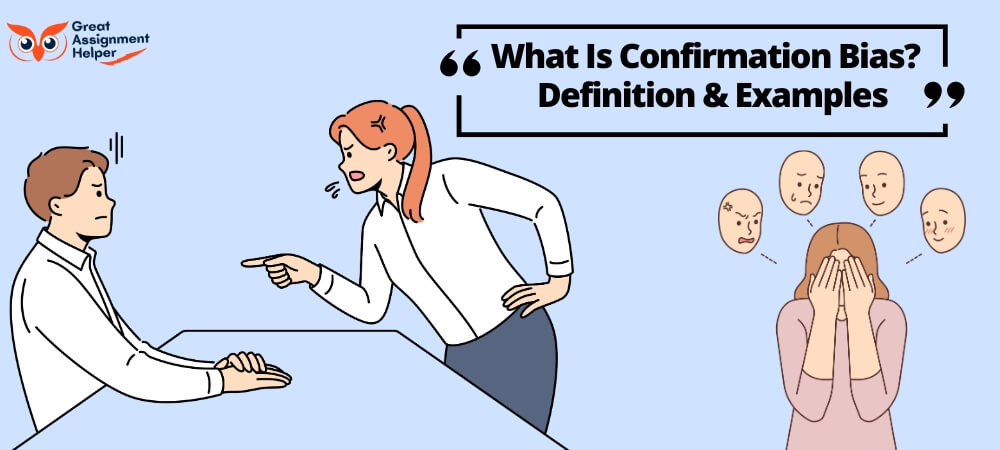
Listen To This Blog
Introduction
In today's fast-paced information age, the concept of confirmation bias has become increasingly relevant. This psychological phenomenon, where individuals favor information that aligns with their existing beliefs and disregard contradictory evidence, plays a crucial role in shaping our perceptions and decisions. From scrolling through social media feeds to making critical life choices, confirmation bias subtly influences our daily interactions and thought processes. As we delve into this topic, it's essential to recognize how this bias impacts our understanding of the world around us and the decisions we make. Let's explore the intricacies of confirmation bias and its effects on our lives.
What is Confirmation Bias?
Confirmation bias is a psychological phenomenon where individuals tend to favor information that confirms their pre-existing beliefs or hypotheses, while often disregarding or undervaluing evidence that contradicts them. This bias affects our information processing, leading to selective observation and skewed interpretation. It's a common occurrence in various aspects of life, from personal decision-making to professional environments. Understanding and acknowledging confirmation bias is crucial for developing a more balanced viewpoint and making well-informed decisions. This concept plays a significant role in how we interpret news, engage in conversations, and form opinions on various subjects.
Types of Confirmation Bias
- Selective Search for Information: This involves actively seeking out information or data that supports one's existing beliefs or hypotheses, while ignoring or dismissing information that contradicts them.
- Selective Interpretation: Here, individuals interpret ambiguous or neutral information in a way that aligns with their existing beliefs or expectations. This type of bias can significantly skew the understanding of information.
- Selective Memory: Often, people remember details that uphold their beliefs more vividly than those that challenge them. This selective recall can reinforce pre-existing beliefs over time.
- Biased Processing: This occurs when individuals give more weight and credibility to information that confirms their beliefs, often without scrutinizing its validity. Conversely, they may unduly scrutinize or rationalize information that contradicts their beliefs.
- Confirmation Bias in Decision Making: In decision-making scenarios, this bias leads to favoring options or solutions that confirm one's preconceptions, potentially overlooking better or more effective alternatives.
- Group Confirmation Bias: Within group settings, confirmation bias can lead to a collective reinforcement of shared beliefs, often at the expense of ignoring dissenting information or viewpoints.
Confirmation Bias Examples
Case Study: Social Media Echo Chambers
Background: Social media platforms have become breeding grounds for confirmation bias, particularly through the creation of echo chambers. These are environments where a user is exposed primarily to opinions and information that align with their own beliefs, reinforcing their existing views.
Example: John, an avid social media user, follows pages and groups that align with his political views. The platform's algorithms, recognizing his preferences, increasingly show him content that echoes his beliefs. Over time, John's exposure to diverse opinions diminishes, and he starts perceiving his views as more widely accepted than they actually are.
Impact: This echo chamber effect on social media not only reinforces John's pre-existing beliefs but also makes him less receptive to alternative viewpoints. It creates a skewed perception of public opinion and polarizes social discourse.
Case Study: Medical Diagnosis
Background: Confirmation bias in medical settings can lead to misdiagnosis or overlooking critical health issues.
Example: Dr. Smith, a seasoned physician, encounters a patient with symptoms that superficially resemble a common flu. Based on initial observations and the patient's history, Dr. Smith quickly concludes it's a flu case, overlooking some subtle signs that suggest a more serious condition.
Impact: The patient's actual condition, which required immediate attention, was initially missed due to Dr. Smith's reliance on his first impression and failure to consider alternative diagnoses. This example highlights the need for comprehensive evaluation in medical practice, beyond initial assumptions.
Case Study: Financial Investment
Background: Investors often fall prey to confirmation bias, impacting their financial decisions.
Example: Emily, an investor, believes that a particular tech company is poised for growth. She selectively seeks out and gives more credence to positive news about the company, ignoring reports about potential challenges or market shifts.
Impact: Emily's investment decisions, driven by her biased view, may lead to overlooking risks and making suboptimal investment choices. This scenario underscores the importance of balanced and thorough research in financial decision-making.
How to Avoid Confirmation Bias
- Seek Diverse Perspectives: Actively look for information and viewpoints that challenge your pre-existing beliefs. Engaging with a wide range of opinions can provide a more balanced understanding of the topic at hand.
- Critical Thinking: Practice critical thinking by questioning your assumptions and the validity of the information you encounter. Ask yourself if you are favoring certain information because it aligns with your beliefs.
- Fact-Checking: Verify the credibility of your sources. Rely on evidence-based information and cross-check facts from multiple reliable sources to ensure a well-rounded view.
- Mindful Decision-Making: Be aware of your decision-making process. Recognize the potential for bias and take a step back to assess if your choices are being unduly influenced by your preconceptions.
- Peer Review and Collaboration: Discuss your ideas and decisions with others, especially those who might have different viewpoints. Collaborative environments can provide checks and balances against personal biases.
- Reflective Practice: Regularly reflect on your thoughts and decisions. Acknowledge instances where confirmation bias might have influenced you and learn from these experiences.
- Embrace Contradictory Information: Instead of dismissing information that contradicts your beliefs, explore it further. Understanding opposing viewpoints can lead to a more nuanced perspective.
- Balance Emotional Responses: Be aware of emotional reactions to information. Strong emotional responses can often cloud judgment and lead to biased thinking.
By incorporating these strategies into your daily life, you can reduce the influence of confirmation bias and make more objective and informed decisions.
Wrapping Up
In conclusion, understanding and mitigating confirmation bias is a crucial skill, especially in the realm of psychology. For students grappling with complex concepts and assignments in this field, seeking external support can be immensely beneficial. A platform like GreatAssignmentHelper offers comprehensive psychology assignment help, providing an invaluable resource for those looking to deepen their understanding and excel academically. With expert guidance, students can navigate the intricacies of psychological theories and practices more effectively, ensuring a well-rounded and bias-aware approach to their studies.
Read More Blog: Exploring the Intricacies of Developmental Psychology: A Comprehensive Guide

